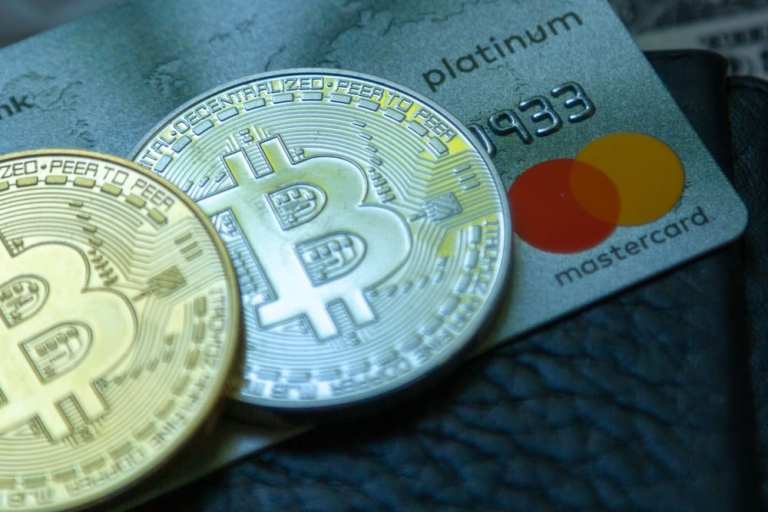Crypto boosters have spent the better part of the past decade promoting the idea that great fiat-currency disruptions are coming care of blockchain and literally hundreds of thousands of variations of cryptocurrency circulating in the world today.
Crypto enthusiasts proclaim that you can front the best-known players like bitcoin or the most obscure blockchain-backed currencies circulating the world and tap into the future of money.
But for all the great expectations often attached to the future of crypto, it has continually run into the same problem — there are very few places where one can actually use it to transact. Even bitcoin is accepted by only a relative handful of digital retailers. Consumers who need to buy groceries, grab gasoline or get their oil changed had better convert their crypto to fiat well ahead of time, as supermarkets, gas stations and mechanics don’t generally take crypto.
Or at least they didn’t until now. Mastercard on Monday (July 20) announced the expansion of its cryptocurrency partner program to streamline the process for crypto-wallet providers to issue secure, compliant payment cards to their customers.
Launched via Mastercard’s Accelerate program, cryptocurrency platform Wirex will be Mastercard’s first partner. It’s issuing Mastercard-branded payment cards that will allow consumers to pay with cryptocurrency reserves.
“We’ve been working with crypto-wallet providers for some time now, and what we’re announcing today is about really making it easy for consumers to be able to spend their crypto in a secure and compliant way — no matter what their cryptocurrency holdings are — at all Mastercard locations worldwide,” Raj Dhamodharan, Mastercard’s executive vice president of digital asset and blockchain products and partnerships, told Karen Webster.
Advertisement: Scroll to Continue
Will this be the push into spendability that cryptocurrency needs to go mainstream in transactions? And what does it portend for the future of blockchain technology in the global commerce ecosystem?
Crypto’s Path To Spendability
Technically, Mastercard’s initiative isn’t a path for spending cryptocurrency directly with merchants. Instead, what Mastercard is doing is first converting cryptocurrency into fiat and then applying it to transactions running over its regular card rails.
The difference for consumers is that the system takes out a stutter steps of making the currency conversion and figuring out how much they need to convert to make a purchase. Mastercard is essentially automating that process on the back end so that consumers can expend the exact amount of crypto they need at that moment.
Webster noted that’s important because cryptocurrency is notoriously volatile in terms of its fiat-currency value day to day (and in some cases hour to hour). So, consumers might wonder how much of their crypto they need to make a purchase at any given moment.
That’s where Mastercard relies on partners like Wirex to help keep customers aware of up-to-the-minute exchange rates they’ll see when they transact, Dhamodharan said.
“The consumer knows whatever their crypto balances are and what conversion rates and other fees that may be there,” he said. “We leave that to the program manager to communicate, and we ask on our partners to make it very clear so that at the end of the day, consumers know how much they’re going to spend.”
But do customers really want to spend crypto given how many people purchase it as an investment to hold over time as it (hopefully) increases in value?
Dhamodharan said that’s impossible to say from the outset. But he said that while bitcoin speculation and wild value swings get a lot of media attention, the world of cryptocurrency interest is both larger and more diverse than just speculators. For example, there are a lot of stablecoins out there favored by those who simply want to use them as a store of value.
Besides, Dhamodharan said Mastercard’s goal isn’t to turn cryptocurrency into the payments trend of 2020. Instead, the company is simply responding to a need visible in the marketplace as interest in crypto grows. Mastercard wants to give consumers options to use their crypto outside of closed-loop systems, along with more options to leverage a resource in a way that’s fully compliant with all local regulations and anti-money laundering (AML) and know your customer (KYC) requirements.
“We are not opening [the initiative] up to anonymous wallets,” he said. “We work with partners like Wirex — custodial digital wallets operated by companies that are offering this program to consumers in a compliant manner.”
The Broader Blockchain Horizon
Dhamodharan told Webster that Mastercard’s expansion into crypto is a natural extension of the Mastercard Accelerate program’s broader goal of building “outreach into the FinTech community,” of which crypto-wallet providers are an important example.
But he added that the new program isn’t the only way Mastercard is looking at blockchain technology. The company is also addressing a number of use cases like better visibility into the supply chain, cross-border payments, B2B exchanges and other places where blockchain can help solve problems because of the way it allows data to move.
“The technology, when applied right, could provide better visibility between parties connected in a complex ecosystem,” he said. “Supply chains [or] examples where there are interdependent parties who do not normally interact with each other or even have a commercial direct relationship [are] an excellent example.”
And while blockchain isn’t the solution to every problem (as its most enthusiastic boosters claim), it can be part of a bigger solution that Mastercard can help power.
“I think when we create more options for consumers shopping or for firm transactions, we create more avenues for solving problems that couldn’t be solved easily before,” Dhamodharan said. “It takes a lot on the back end, but we think this improves the commerce ecosystem across the board.”




